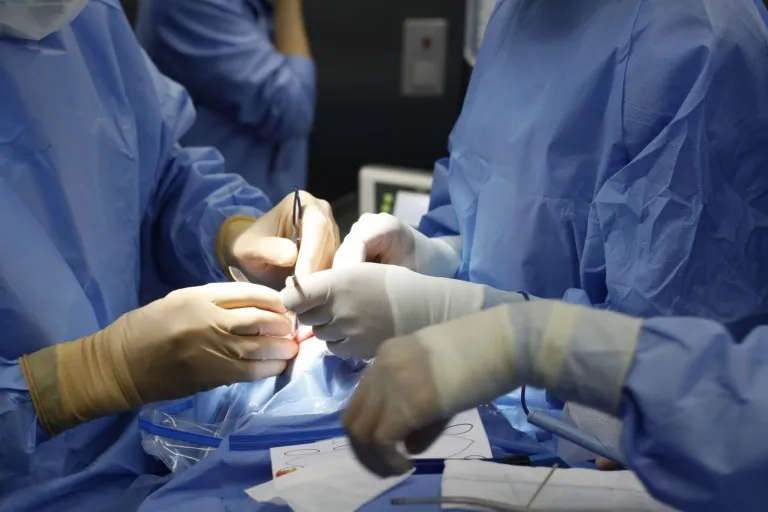Treatments
Dacryocystorhinostomy

What is a dacryocystorhinostomy?
The dacryocystorhinostomy or “DCR” is surgery that enables us to open up an alternative drainage duct to the tear duct. When this duct connecting the eye and the nose is blocked, tears cannot run freely and must be redirected by opening a new way to prevent them from accumulating.
To do so, a small “window” is created in the lachrymal bone, and the lachrymal sac (which collects tears flowing from the eye’s surface and pumps them) with the nasal cavity. The most common way of doing this is through a very discreet micro-insertion in the skin (external dacryocystorhinostomy), although the Miranza specialists are forerunners in Spain and Europe in performing the surgery through the nose, using a small camera (endoscopic or endonasal dacryocystorhinostomy). This avoids any visible mark, reduces the time of the surgery, and speeds up recovery.
Our oculoplastic ophthalmologists were also trailblazers in this surgical intervention in outpatients, and with local anaesthetic and sedation instead of general anaesthetic in most cases. Performed by experts, DCR has a very high success rate of around 90-95%.
Eye diseases treated by dacryocystorhinostomy
Treating blocked tear ducts provides an effective solution to the problem of watery eyes . The dacryocystorhinostomy is especially recommended in patients with very intense excessive tearing and/or repeat infection in the lachrymal sac due to the accumulation of tears.
Recovery
In general, we will fit a silicone tube during surgery, around which the new drainage duct will heal. This tube must be worn for around 6 weeks, although this may vary depending on the case and on the doctor’s criteria. Your ophthalmologist will specifically indicate the guidelines for post-operative check ups, and the treatment and recommendations to follow to avoid any complications.
During the initial recovery period, you might have the feeling of a foreign body in your eye, red eye, a swollen eyelid and persistent tearing, and the area around the eye might be bruised, especially during the first 72 h. Any minor bleeding is not dangerous and you should not be alarmed. You will notice how all this discomfort will gradually improve over the first week. During this time, although you will practically be able to return to normal, we recommend not blowing your nose or doing any significant physical efforts.